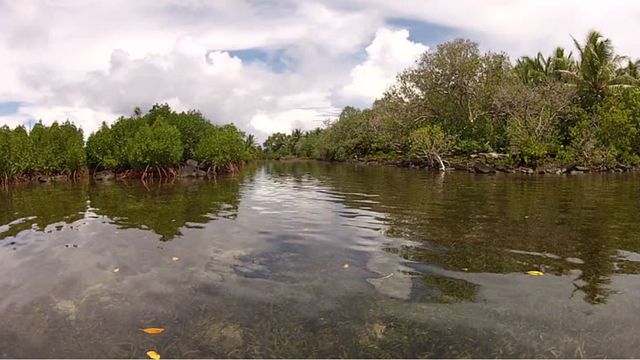
How To Catch Bass In Flooded Bushes And Submerged Timber
Although it spends most of its time on dry ground, a bush serves as a prime piece of property for bass under the right circumstances. Flooded bushes are bass hideouts and one of the best places to look for bass in the spring.Water fluctuations on reservoirs frequently change the shallow-water residences of bass throughout the year. During low-water periods, cover becomes scarce in the shallows and bass usually resort to deeper havens. However when the lake level rises, a myriad of shoreline vegetation and timber becomes inundated, leaving bass with almost too many choices for hideouts.Finding bass in the maze of flooded shallow cover presents a difficult challenge to some anglers unless they know how to beat around the bush. Flooded weeds and large trees attract some bass when the lake is on the rise, but the shape and size of a bush make it a perfect shallow-water shelter for bass. Whether it’s button brush or willow bushes, these small woody plants offer bass an ideal ambush point that allows them to attack from any direction within the cover. The plant’s abundant limbs also provide shade and concealment for lurking bass.Inundated brush attracts bass throughout most of the year, so try flooded bushes any time you can find them. However spring is usually the best time to beat the bushes since bass are already migrating to the shallows and move quickly into this cover.
The spawning cycle and lake level determines where to search for flooded bushes. A lot of times bushes on steep, rocky shelf banks are best but sometimes you have to key on a flat pea gravel bank in a cut. In early spring and summer, key on main lake bushes, but if spring rains cause the lake to rise quickly, head for the backs of coves.Sparse bushes tend to hold more bass while a thicket of brush tends to spread out the fish. Look for an isolated bush first and anything that has something different to it.Willow bushes with green leaves are ideal targets since the bush creates more shade for bass.Working around the whole bush takes some patience, but savvy anglers key on certain spots to catch the most fish from this flooded cover. A lot of times the fish will be suspended up off the bottom depending on the water depth. Most of the time though bass will be at the base of the bush right on the bottom. Concentrate mainly on the trunk of buck brush, but work all of the cover when fishing a large green willow. Shady spots in a bush are key targets so pitch your bait to any darker area in a bush.Rising and falling lake levels also determine the location of bass in the flooded thickets. The fish usually do what the lake’s doing. If the lake is rising the fish keep going shallower. If it's falling, some bass stay shallow, but most of the fish will back off the bank into deeper bushes.The mood of the bass frequently dictates where to present lures in a bush. Pitch to the outside edges of the bush first and then work your way into the trunk. During heavy fishing pressure situations, concentrate more on the base of the bush.Flipping and pitching are the preferred presentations for coaxing bass out of bushes. A jig tipped with a plastic crawfish or chunk or a plastic worm are ideal for bush tactics. Select a 1/2-ounce or heavier jig in black-and-blue or brown hues combined with a plastic crawfish trailer or medium-size chunk in matching colors. In murky water situations, switch to a black-and-chartreuse jig with a similar color scheme on the trailer.
A plastic lizard pegged with a 1/8- to 3/16-ounce sinker is another great lure to toss into bushes. The light sinker allows the lizard to fall real slow through the cover. The most productive lizard colors are June bug for dirty water and watermelon (tail dipped in red dye) for clear water.A green pumpkin tube jig also produces when bass get finicky. Rig the tube on a 3/16-ounce jighead with a plastic weedguard. You can fish the tube Texas rigged but if the bite is real light you can catch more fish by using the open hook.The same retrieve works for all of the lures flipped into the bushes. Drop the lure down in the bush and get it to the bottom. Strikes usually occur on the initial fall or after hopping the jig off the bottom. If a bass doesn’t hit on the first hop, it will usually grab the jig on the second or third hop.Heavy fishing line is required for catching bass in flooded bushes. Use 20- to 30-pound test line for bush tactics most of the time but scale down to 15-pound test for clear-water conditions or when bites are few and far between.
Updated April 19th, 2017 at 1:12 PM CT
